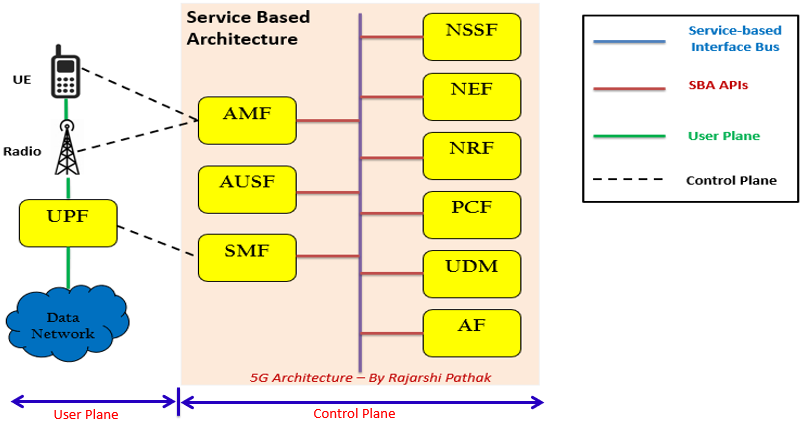5G Core Network Architecture Explained
telcomatraining.com – The arrival of 5G technology has reshaped the way networks are designed, managed, and optimized. At the heart of this transformation is the 5G Core (5GC) network architecture, which enables faster speeds, ultra-low latency, and massive connectivity for both consumers and enterprises. Unlike previous generations that relied heavily on hardware-centric systems, the 5G Core is built on cloud-native, software-defined principles, making it more flexible, scalable, and efficient.
The Shift from EPC to 5G Core
In 4G LTE, the Evolved Packet Core (EPC) was responsible for handling data traffic, mobility management, and session control. While effective, EPC was designed primarily for smartphones and consumer use cases.
5G Core, on the other hand, is designed with broader applications in mind—supporting everything from autonomous vehicles to massive IoT deployments. This shift enables new capabilities such as network slicing, service-based architecture (SBA), and integration with edge computing.
Key Components of 5G Core Network
The 5G Core is organized into functional modules that interact in a service-based manner rather than through rigid, point-to-point interfaces. The most critical components include:
- Access and Mobility Management Function (AMF): Handles user registration, mobility management, and connection setup.
- Session Management Function (SMF): Manages session establishment, modification, and release for user data connections.
- User Plane Function (UPF): Directs data traffic, providing flexibility in routing through distributed or centralized deployments.
- Network Repository Function (NRF): Stores and provides service discovery of available network functions within the SBA.
- Policy Control Function (PCF): Applies rules for quality of service (QoS), charging, and access prioritization.
- Authentication Server Function (AUSF): Ensures secure access with strong authentication methods.
- Network Slice Selection Function (NSSF): Assigns devices to appropriate network slices based on service requirements.
Together, these functions provide a modular and programmable approach, unlike the monolithic EPC design.
Service-Based Architecture (SBA)
One of the most important innovations in the 5G Core is the service-based architecture. Instead of fixed interfaces, each network function exposes RESTful APIs, allowing other functions to request services dynamically. This makes the system more agile, supports automation, and simplifies integration with cloud and IT systems.
Network Slicing and Customization
A key advantage of 5G Core is the ability to create network slices—virtualized, end-to-end networks tailored for specific needs. For instance:
- A low-latency slice for autonomous vehicles.
- A high-bandwidth slice for streaming and gaming.
- A massive IoT slice optimized for millions of sensors with low power needs.
This flexibility allows operators to monetize their networks by offering customized services for different industries.
Integration with Edge Computing
To reduce latency and enhance real-time applications, 5G Core integrates with Multi-access Edge Computing (MEC). This allows processing and storage to move closer to the end-user, enabling applications like augmented reality, smart manufacturing, and telemedicine.
Benefits of 5G Core Architecture
- Scalability: Cloud-native design allows networks to expand or contract based on demand.
- Efficiency: Service-based functions reduce complexity and optimize resource allocation.
- Security: Advanced authentication and encryption improve network trustworthiness.
- Future-Proofing: Open APIs and virtualization make it easier to evolve with new technologies.
Conclusion
The 5G Core Network Architecture is the backbone of next-generation connectivity, offering the agility and intelligence needed to support new digital services. With innovations like service-based architecture, network slicing, and edge integration, it provides the foundation for everything from immersive consumer experiences to mission-critical enterprise applications. As global deployment continues, understanding the 5G Core is key to unlocking the full potential of this revolutionary technology.







